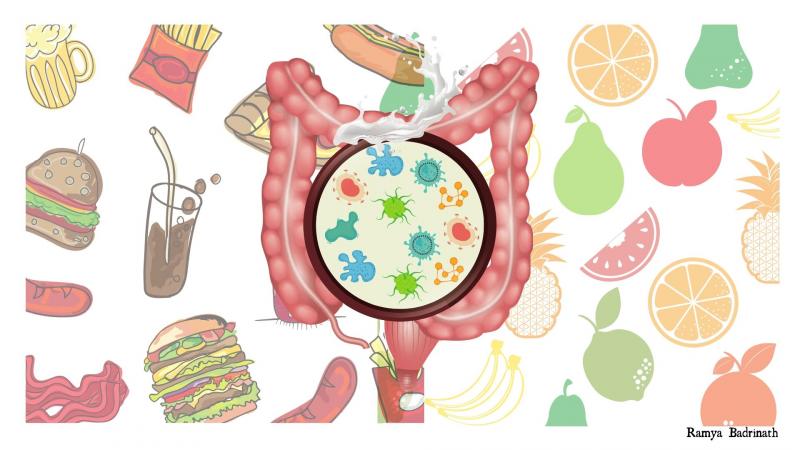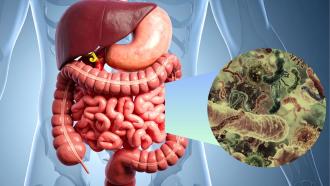
The human gastrointestinal tract is inhabited by myriad microbes, which collectively form the gut microbiome. The interaction between the members of this internal 'ecosystem' can help us understand their organisation, growth, and how they react to what we eat. In summary, this tiny ecosystem in our gut determines our health. In a recent study, published in the journal Science, an international collaboration of researchers has investigated if these microbes hold a clue to the health of malnourished children.
The researchers studied 36 healthy children and 63 kids who suffered from moderate to severe malnutrition, from Mirpur in Bangladesh. These children were aged between one month and five years. The researchers collected monthly faecal samples and analysed the RNA—the genetic material of bacteria—present in these samples. They then tried to understand and identify predominant microbial species in the gut of these children. The study identified a total of 15 species that interacted with each other, forming 'eco-groups', from which further analysis was done.
The researchers identified the most dominant species of bacteria as Bifidobacterium longum, Faecalibacterium prausnitzii, Prevotella copri, Streptococcus thermophilus and Lactobacillus ruminis. They found that the structural organisation of the microbiome remained consistent from the 20th month, which is usually when the child is introduced to solid food. They then used statistical analysis and found that B. longum and P. copri existed in the absence of each other. The researchers also tested faecal samples of children in India and Peru to confirm the presence of similar eco-groups.
A parallel study analysed faecal samples of malnourished children aged between 12 to 18 months. These children were suffering from one of the two forms of malnutrition—moderate acute malnutrition (MAM) and severe acute malnutrition (SAM). Those suffering from MAM have a 'weight to height z-score' between -2 and -3, as compared to -0.48 and above for a healthy individual. SAM manifests as an extreme loss of body fat and muscle tissue along with the presence of oedema in the lower limbs. Conditions like Marasmus and Kwashiorkor are some common forms of SAM.
In this study, the researchers analysed the microbiome of malnourished children before, during and after the diet and therapeutic interventions. Over nine weeks, they were fed three different microbiota-directed complementary foods like chickpeas, bananas, tilapia and yoghurt, and ready-to-use supplementary foods.
The study found that children who were suffering from SAM showed improved symptoms after one month. However, the bacterial population in the gut was still low and mainly consisted of B. longum. Among those who had MAM, the therapeutic intervention seemed to have worked, bringing back the gut microbiome to a healthy state. The microorganisms present in kids with SAM were predominantly B. longum, whereas, in improved healthier conditions, P. copri was dominant.
The above experiment was replicated in germ-free piglets to understand the interactions between P. copri and B. longum. The fully weaned animals had a predominantly high level of P. copri. However, during the milk-feeding stages, the faeces showed high levels of B. longum. This observation was similar to the microbial contents seen in the children studied.
The eco-groups identified in this study can be used to distinguish the gut bacteria of children with different degrees of undernutrition, say the researchers. They can also be restored to a healthy state by timely interventions, as shown in the study. The study on piglets, designed to model dietary transitions in children, show the evolution of the gut microbiome and the relationship between its members.
"The gut microbiota must satisfy the constraints of survival: namely, withstanding insult and maintaining functionality (robustness) while still having the capacity for plasticity", assert the researchers.






